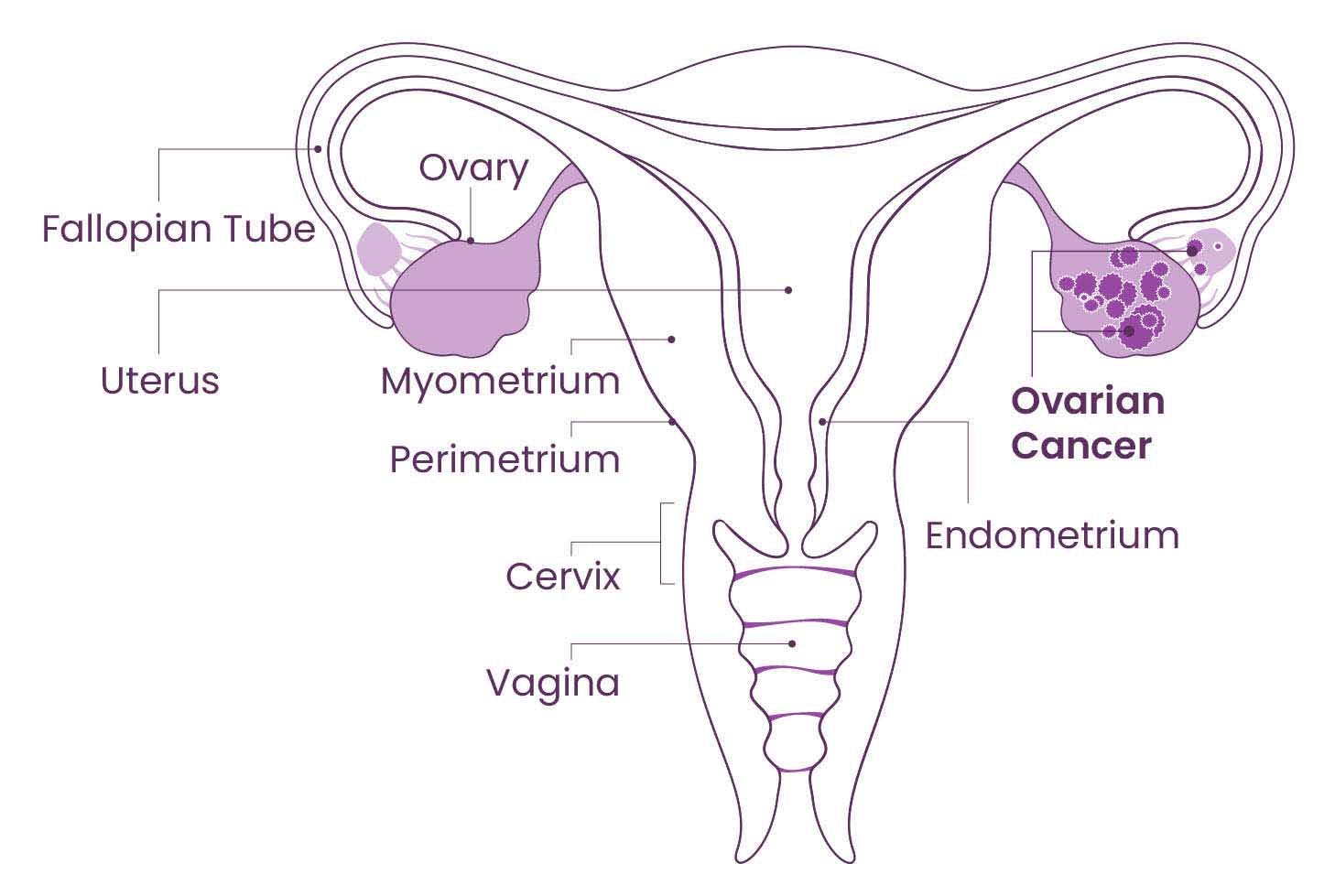You are about to leave OurWayForward.com.
You are about to leave a GSK website. By clicking this link, you will be taken to a website that is independent from GSK. The site you are linking to is not controlled or endorsed by GSK and GSK is not responsible for its content.
What is Ovarian Cancer?
Ovarian cancer is a type of cancer that starts in the ovaries or fallopian tubes.

What do the ovaries do?
Ovaries are small, oval-shaped glands that are located on either side of a uterus. The ovaries are where eggs and hormones, which control menstrual cycles and pregnancy, are produced. Ovaries continue to release an egg each menstrual cycle, until menopause is reached. The fallopian tubes are the passageway between the ovary and the uterus and are where eggs can be fertilized by sperm.
~20,000 women in the U.S. will be diagnosed with ovarian cancer annually.
Types of Ovarian Cancer
The ovaries are primarily made up of germ cells, epithelial cells, and stromal cells. Because cancer can originate in each of these cell types, there are several types of ovarian cancer.
Epithelial Ovarian Cancer
- Develops in a thin layer of tissue that covers the ovaries
- Is the most common type of ovarian cancer, accounting for about 90% of cases
- Is most common in those who are postmenopausal
- Is typically diagnosed at an advanced stage
Germ Cell Carcinoma
- Begins in the germ cells that form eggs
- Accounts for about 5% of ovarian cancer cases
- Is found more often in young women or adolescent girls
- Usually diagnosed in early stages
Stromal Carcinoma
- Forms in the connective tissue cells that hold the ovaries together
- Accounts for about 1.2% of ovarian cancer cases
- Most commonly occurs in individuals over the age of 50
- Is diagnosed at stage I in most cases
Small Cell Carcinoma of the Ovary
- Has an uncertain cell type of origin
- Is very rare, accounting for 0.1% of ovarian cancer cases
- Mainly affects those in their 20s
- Progresses rapidly and is often detected late